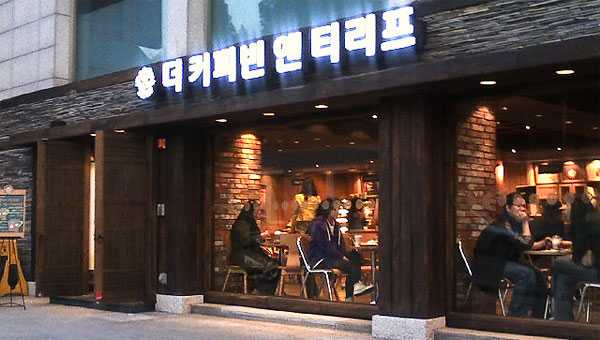SEOUL — South Koreans love coffee. Office workers often buy a cup on the way to work in the morning as well as after lunch. Here in the capital, as many as 10 coffee shops and takeaway stands can be packed within a one-minute walk of one another.
A cup of coffee is not that cheap, though. An Americano — a shot of espresso with hot water added to it — costs 4,100 won ($3.70) at Starbucks. That is almost as much as a traditional kimchi jjigae hot pot, a popular lunch dish, which can be had for around 5,000 won.
Still, the high price can be rather convenient, in a way. South Koreans generally do not split the lunch bill. Perhaps you’ll pick up the tab for the jjigae, and your coworker will buy the Americanos on the way back to the office. How fair this trade-off is depends on the price difference between lunch and coffee.
Paik’s Coffee is widening the gap (psst — offer to buy the coffee). The chain offers “cheap, big and delicious” cups of joe. In non-slogan language, a tall Americano goes for 1,500 won, less than half what Starbucks charges.
It’s coffee “price destruction,” news outlets scream.
The chain began taking off last year and now has 490 shops across the country.
“I will go to Starbucks if I’ll be staying a while,” an office worker in her 30s said. “But for takeaway, cheaper coffee will do. And it doesn’t taste bad.”
The office worker said she picks up coffee at Paik’s twice a week.
Another chain is attracting the anti-coffee crowd. Juicy, a chain of takeaway fresh juice stands, also has grown rapidly over the past year or so and now has more than 500 shops.
A medium-size bottle of freshly-squeezed juice sells for 1,500 won.Customers often form lines in front of the shops.
While cheaper drinks give consumers reason to cheer, they give retailers something to fear — the specter of deflation.
South Korea’s consumer price index has been hovering at around 1% year-on-year growth.
Meanwhile, the growth rate has been frequently revised down, and experts worry about South Korea possibly falling into a Japanlike spiral.
Are Paiks Coffee and Juicy signs that South Korea is entering its own “lost decades?”
Kentaro Ogura


















